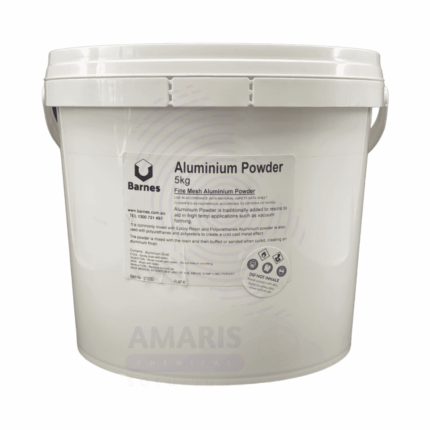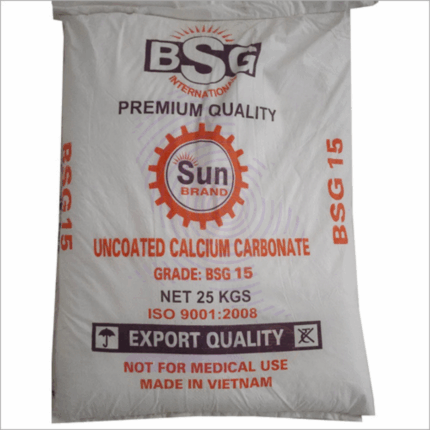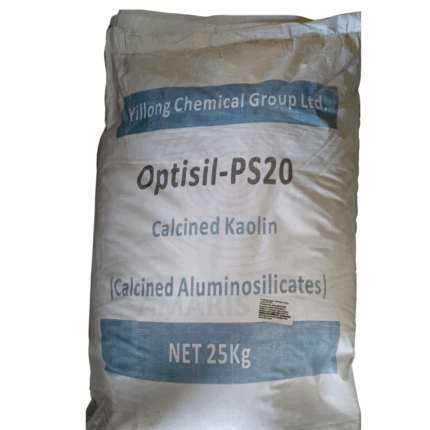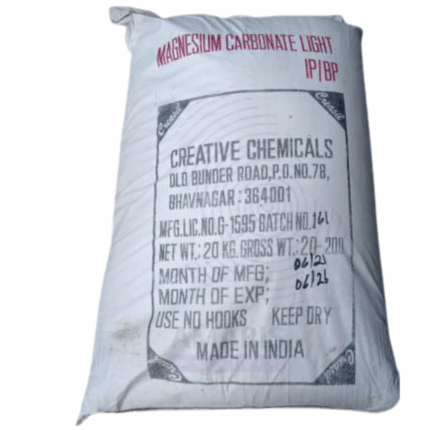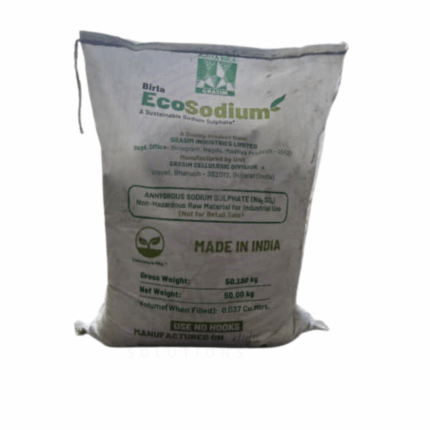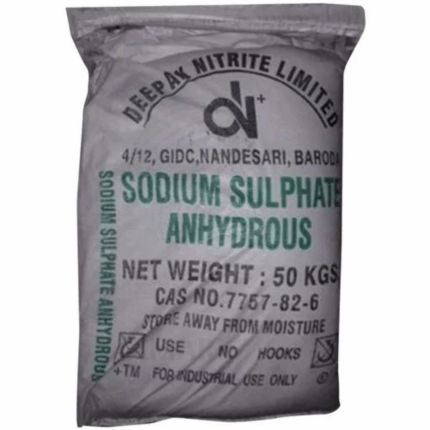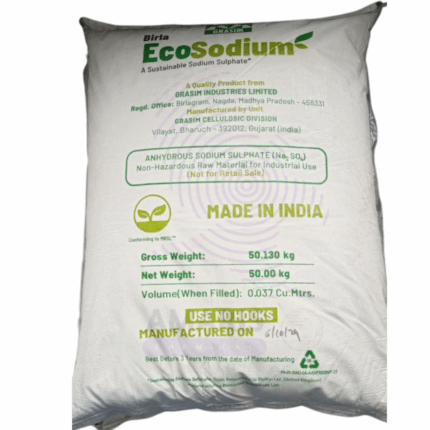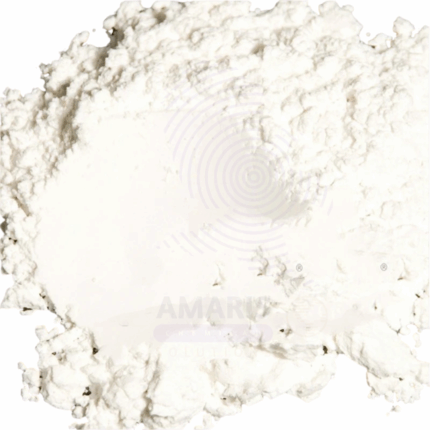Filler WTD
Whatsapp Order
Filler WTD is a versatile, finely processed powdered filler primarily used in a wide range of industrial applications including paints, coatings, plastics, adhesives, sealants, rubber compounds, and construction materials. It is engineered to improve product performance by enhancing mechanical properties, increasing volume, reducing cost, and improving processing characteristics. Filler WTD typically exhibits excellent dispersibility, consistent particle size distribution, and good compatibility with various resin systems and binders. Its primary role is to act as an inert extender or reinforcing agent, providing bulk and stability while maintaining or enhancing the physical and chemical properties of the final formulation.
Description
Table of Contents
Toggle
Filler WTD
Primary Uses
- Paints and Coatings
- Serves as an extender pigment to increase volume and reduce formulation costs without compromising coating quality.
- Enhances opacity, brightness, and surface smoothness of paints and varnishes.
- Improves mechanical properties such as scratch resistance, durability, and weathering performance.
- Aids in controlling viscosity and rheology for better application and flow.
- Plastics and Polymers
- Used as a reinforcing filler in thermoplastics and thermosets to improve stiffness, dimensional stability, and impact resistance.
- Helps reduce shrinkage and warpage during molding processes.
- Contributes to improved processing efficiency by modifying melt flow and extrusion characteristics.
- Acts as a cost-effective volume extender to reduce raw material expenses.
- Adhesives and Sealants
- Enhances the mechanical strength and durability of adhesive bonds and sealant compounds.
- Controls shrinkage and curing characteristics.
- Improves workability and consistency of formulations.
- Rubber Compounds
- Used as a reinforcing or processing filler in natural and synthetic rubber products to improve tensile strength, abrasion resistance, and elasticity.
- Assists in controlling hardness and resilience of rubber goods.
- Construction Materials
- Incorporated into cement, mortar, plaster, and putty formulations to improve bulk, reduce cracking, and enhance workability.
- Improves texture and finish quality of architectural coatings and plasters.
Secondary Uses
- Paper Industry
- Utilized as a filler to improve paper opacity, brightness, and printability.
- Enhances surface smoothness and ink receptivity.
- Ceramics and Glass
- Acts as a functional filler in ceramic bodies to improve firing behavior and mechanical properties.
- Used in glass formulations to modify melting points and optical properties.
- Cosmetics
- Occasionally employed in personal care formulations (e.g., powders) as a texturizing and bulking agent, though this is less common depending on composition.
KEY PRODUCT FEATURES
1. Basic Identification Attributes
- Chemical Name: Variable depending on composition (commonly calcium carbonate, talc, silica, or other mineral fillers)
- Common/Trade Name: Filler WTD
- CAS Number: Depends on primary mineral content (e.g., calcium carbonate CAS 471-34-1)
- HS Code: Varies depending on material but generally under 2508, 2529, or related chapters
- Molecular Formula: Variable depending on specific filler chemistry
2. Physical & Chemical Properties
- Physical State: Fine powder
- Color: Off-white to white, depending on formulation
- Odor: Odorless
- Particle Size: Typically micron-sized, uniform distribution for optimal dispersibility
- Density: Varies (usually 2.5–2.8 g/cm³ for mineral fillers)
- Solubility: Insoluble in water and organic solvents
- pH: Neutral to slightly alkaline depending on composition
- Stability: Chemically inert and stable under normal processing and storage conditions
3. Safety & Hazard Attributes
- Hazard Class (GHS): Generally classified as non-hazardous inert material; dust may cause respiratory irritation
- Toxicity: Low toxicity; prolonged inhalation of dust may cause respiratory discomfort
- Exposure Limits: Follow local occupational exposure limits for nuisance dust (typically OSHA PEL = 15 mg/m³ total dust, 5 mg/m³ respirable dust)
4. Storage & Handling Attributes
- Storage Conditions: Store in dry, cool, and well-ventilated areas; avoid moisture to prevent caking
- Container Type: Bags or bulk containers designed to minimize moisture ingress
- Shelf Life: Indefinite if stored properly in sealed, dry conditions
- Handling Precautions: Use dust control measures; wear PPE during handling to avoid dust inhalation
5. Regulatory & Compliance Attributes
- Complies with relevant industry standards for fillers in paints, plastics, and construction materials
- Registered and approved for use in applicable industries according to regional regulatory frameworks
6. Environmental & Health Impact
- Biodegradability: Inert mineral fillers do not biodegrade but are environmentally stable
- Ecotoxicity: Generally low environmental impact; avoid uncontrolled release into waterways
- Bioaccumulation: Not applicable
- Carcinogenicity/Mutagenicity: Not carcinogenic; inert mineral nature
SAFETY HANDLING PRECAUTIONS
Safety Handling Precautions
- PPE Required: Dust mask or respirator, safety goggles, gloves
- Handling Guidelines: Minimize dust generation; use local exhaust ventilation where possible
- Storage Measures: Keep containers sealed and dry
- Hygiene Practices: Wash hands after handling; avoid eating/drinking in handling areas
First Aid Measures
- Inhalation: Move to fresh air; seek medical advice if respiratory irritation occurs
- Skin Contact: Wash with soap and water; seek medical attention if irritation develops
- Eye Contact: Rinse thoroughly with water for at least 15 minutes; consult a physician if irritation persists
- Ingestion: Rinse mouth; seek medical advice if large quantities swallowed
Firefighting Measures
- Fire Hazards: Non-flammable
- Extinguishing Media: Use appropriate media for surrounding fire
- Special Precautions: None specific to Filler WTD; avoid dust cloud ignition
Related products
Aluminum Fine Powder
$ 0.20
Aluminum fine powder consists of finely divided aluminum particles, typically metallic and silvery-white in appearance. It is produced by atomization or grinding of bulk aluminum and is valued for its high surface area, excellent conductivity, and lightweight metallic properties. Aluminum fine powder is extensively used in various industrial applications including metallurgy, pyrotechnics, coatings, additive manufacturing, and as a pigment. Due to its reactivity, it requires careful handling and storage. Its fine particulate nature makes it particularly useful where rapid oxidation or reaction is desired, such as in explosives or energetic materials. It is also employed in the manufacturing of paints, inks, and cosmetics to impart metallic luster.
Calcium Carbonate Uncoated
Calcium Carbonate Uncoated is a naturally occurring mineral compound composed primarily of calcium, carbon, and oxygen with the chemical formula CaCO₃. It appears as a fine white powder or granules, widely used as a filler, pigment, and functional additive across various industries. The uncoated form means the calcium carbonate particles are not surface-treated, retaining their natural properties. It is valued for its high brightness, whiteness, and excellent compressibility. Uncoated calcium carbonate is used to enhance opacity, improve processing, and reduce costs in plastics, paints, coatings, adhesives, rubber, paper, and construction materials.
Kaolin
$ 1.20
Kaolin is a naturally occurring, fine white clay mineral primarily composed of kaolinite. It features a soft, powdery texture and excellent absorbency. Kaolin is widely used across ceramics, paper, rubber, paint, and cosmetics industries due to its chemical inertness, whiteness, and plasticity. It acts as a filler, coating agent, and extender to enhance product quality and performance.
Magnesium Carbonate Light
Magnesium Carbonate Light is a fine, white, odorless powder primarily composed of magnesium carbonate (MgCO₃). It is characterized by its light texture and high purity. This mineral compound is widely used across various industries due to its excellent absorption properties, mild alkalinity, and non-toxic nature. Magnesium Carbonate Light is commonly employed as an antacid, drying agent, filler, and flow aid in food, pharmaceutical, cosmetic, and industrial applications.
PP Raffia RH03
PP Raffia RH03 is a woven polypropylene fabric made from homopolymer polypropylene resin, designed for high strength, durability, and excellent dimensional stability. It is widely used in the manufacturing of woven sacks, bags, and other flexible packaging solutions. The woven structure enhances tear resistance and load-bearing capacity, making it suitable for industrial and agricultural packaging applications.
Sodium Sulphate
Sodium Sulphate (Na₂SO₄) is a white crystalline powder or granule, odorless and highly soluble in water. This 25kg packaged product is widely used in detergents, glass manufacturing, chemical industries, and pulp and paper processing. It acts as a filler, bulking agent, and drying agent, with excellent stability and non-reactivity under standard storage conditions. Its cost-effectiveness and availability make it an essential raw material in many industrial processes.
Sodium Sulphate Anhydrous
Sodium Sulphate Anhydrous (Na₂SO₄) is a white crystalline powder, odorless and highly soluble in water. Unlike the decahydrate form (Glauber's salt), this anhydrous grade contains minimal water content, making it ideal for industrial applications requiring low moisture levels. Supplied in 25kg packaging, it is widely used as a filler, drying agent, and raw material in detergents, glass manufacturing, pulp and paper, and chemical synthesis. Its excellent stability, non-hygroscopic nature, and cost-effectiveness make it an essential bulk chemical.
Whiting
Whiting is a finely ground, white, chalky substance primarily composed of calcium carbonate (CaCO₃). It is widely used as a pigment, filler, and extender in various industrial and commercial applications. Whiting provides opacity, brightness, and smoothness to products, enhancing their appearance and physical properties. Its natural abundance and versatility make it an economical additive in multiple manufacturing processes.


 Preservatives(food)
Preservatives(food) Flavor Enhancers
Flavor Enhancers Acidulants
Acidulants Sweeteners
Sweeteners Antioxidants
Antioxidants Colorants(food)
Colorants(food) Nutraceutical Ingredients (food)
Nutraceutical Ingredients (food) Nutrient Supplements
Nutrient Supplements Emulsifiers
Emulsifiers
 Collectors
Collectors Dust Suppressants
Dust Suppressants Explosives and Blasting Agents
Explosives and Blasting Agents Flocculants and Coagulants
Flocculants and Coagulants Frothers
Frothers Leaching Agents
Leaching Agents pH Modifiers
pH Modifiers Precious Metal Extraction Agents
Precious Metal Extraction Agents
 Antioxidants(plastic)
Antioxidants(plastic) Colorants (Pigments, Dyes)
Colorants (Pigments, Dyes) Fillers and Reinforcements
Fillers and Reinforcements Flame Retardants
Flame Retardants Monomers
Monomers Plasticizers
Plasticizers Polymerization Initiators
Polymerization Initiators Stabilizers (UV, Heat)
Stabilizers (UV, Heat)
 Antifoaming Agents
Antifoaming Agents Chelating Agents
Chelating Agents Coagulants and Flocculants
Coagulants and Flocculants Corrosion Inhibitors
Corrosion Inhibitors Disinfectants and Biocides
Disinfectants and Biocides Oxidizing Agents
Oxidizing Agents pH Adjusters
pH Adjusters Scale Inhibitors( water)
Scale Inhibitors( water)
 Antioxidants(cosmetic)
Antioxidants(cosmetic) Emollients
Emollients Fragrances and Essential Oils
Fragrances and Essential Oils Humectants
Humectants Preservatives
Preservatives Surfactants(cosmetic)
Surfactants(cosmetic) Thickeners
Thickeners UV Filters
UV Filters
 Fertilizers
Fertilizers Soil Conditioners
Soil Conditioners Plant Growth Regulators
Plant Growth Regulators Animal Feed Additives
Animal Feed Additives Biostimulants
Biostimulants Pesticides (Herbicides, Insecticides, Fungicides)
Pesticides (Herbicides, Insecticides, Fungicides)
 Active Pharmaceutical Ingredients (APIs)
Active Pharmaceutical Ingredients (APIs) Excipients
Excipients Solvents(pharmaceutical)
Solvents(pharmaceutical) Antibiotics
Antibiotics Antiseptics and Disinfectants
Antiseptics and Disinfectants Vaccine Adjuvants
Vaccine Adjuvants Nutraceutical Ingredients (pharmaceutical)
Nutraceutical Ingredients (pharmaceutical) Analgesics & Antipyretics
Analgesics & Antipyretics
 Analytical Reagents
Analytical Reagents Solvents(lab)
Solvents(lab) Chromatography Chemicals
Chromatography Chemicals Spectroscopy Reagents
Spectroscopy Reagents microbiology-and-cell-culture-reagents
microbiology-and-cell-culture-reagents Molecular Biology Reagents
Molecular Biology Reagents Biochemical Reagents
Biochemical Reagents Inorganic and Organic Standards
Inorganic and Organic Standards Laboratory Safety Chemicals
Laboratory Safety Chemicals Specialty Laboratory Chemicals(Special Laboratory Equipment)
Specialty Laboratory Chemicals(Special Laboratory Equipment)
 Demulsifiers
Demulsifiers Hydraulic Fracturing Fluids
Hydraulic Fracturing Fluids Scale Inhibitors(oil)
Scale Inhibitors(oil) Surfactants(oil)
Surfactants(oil) Drilling Fluids
Drilling Fluids
 Dyes and Pigments
Dyes and Pigments Bleaching Agents
Bleaching Agents Softening Agents
Softening Agents Finishing Agents
Finishing Agents Antistatic Agents
Antistatic Agents
 Admixtures
Admixtures Waterproofing Agents
Waterproofing Agents Sealants and Adhesives
Sealants and Adhesives Curing Compounds
Curing Compounds Concrete Repair Chemicals
Concrete Repair Chemicals Anti-Corrosion Coatings
Anti-Corrosion Coatings
 Surfactants(cleaning)
Surfactants(cleaning) Builders
Builders Enzymes
Enzymes Solvents (Cleaning)
Solvents (Cleaning) Fragrances
Fragrances
 Electronic Chemicals
Electronic Chemicals Catalysts
Catalysts Lubricants
Lubricants Photographic Chemicals
Photographic Chemicals Refrigerants
Refrigerants Automotive chemicals
Automotive chemicals Pyrotechnic Chemicals
Pyrotechnic Chemicals
 Biodegradable Surfactants
Biodegradable Surfactants Bio-based Solvents
Bio-based Solvents Renewable Polymers
Renewable Polymers Carbon Capture Chemicals
Carbon Capture Chemicals Wastewater Treatment Chemicals
Wastewater Treatment Chemicals
 Pigments
Pigments Solvents(paint)
Solvents(paint) Specialty Coatings
Specialty Coatings Binders/Resins
Binders/Resins Additives
Additives Driers
Driers Anti-Corrosion Agents
Anti-Corrosion Agents Functional Coatings
Functional Coatings Application-Specific Coatings
Application-Specific Coatings
 Fresh Herbs
Fresh Herbs Ground Spices
Ground Spices Whole Spices
Whole Spices Spice Blends
Spice Blends Dried Herbs
Dried Herbs
 Leavening Agents
Leavening Agents Dough Conditioners
Dough Conditioners Flour Treatments
Flour Treatments Fat Replacers
Fat Replacers Decoratives
Decoratives Preservatives(baking)
Preservatives(baking)
 Plasticizers & Softeners
Plasticizers & Softeners Reinforcing Agents
Reinforcing Agents Adhesion Promoters
Adhesion Promoters Vulcanizing Agents
Vulcanizing Agents Antidegradants
Antidegradants Blowing Agents
Blowing Agents Fillers & Extenders
Fillers & Extenders Accelerators & Retarders
Accelerators & Retarders


